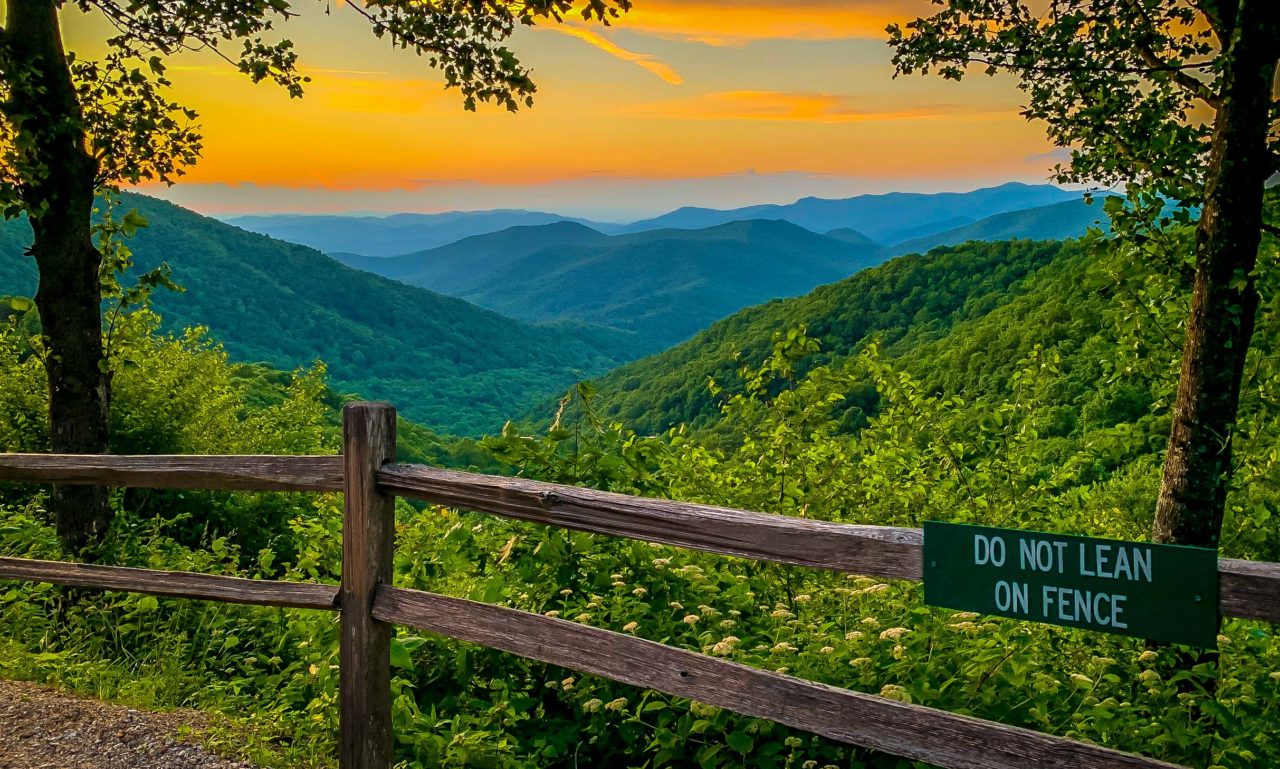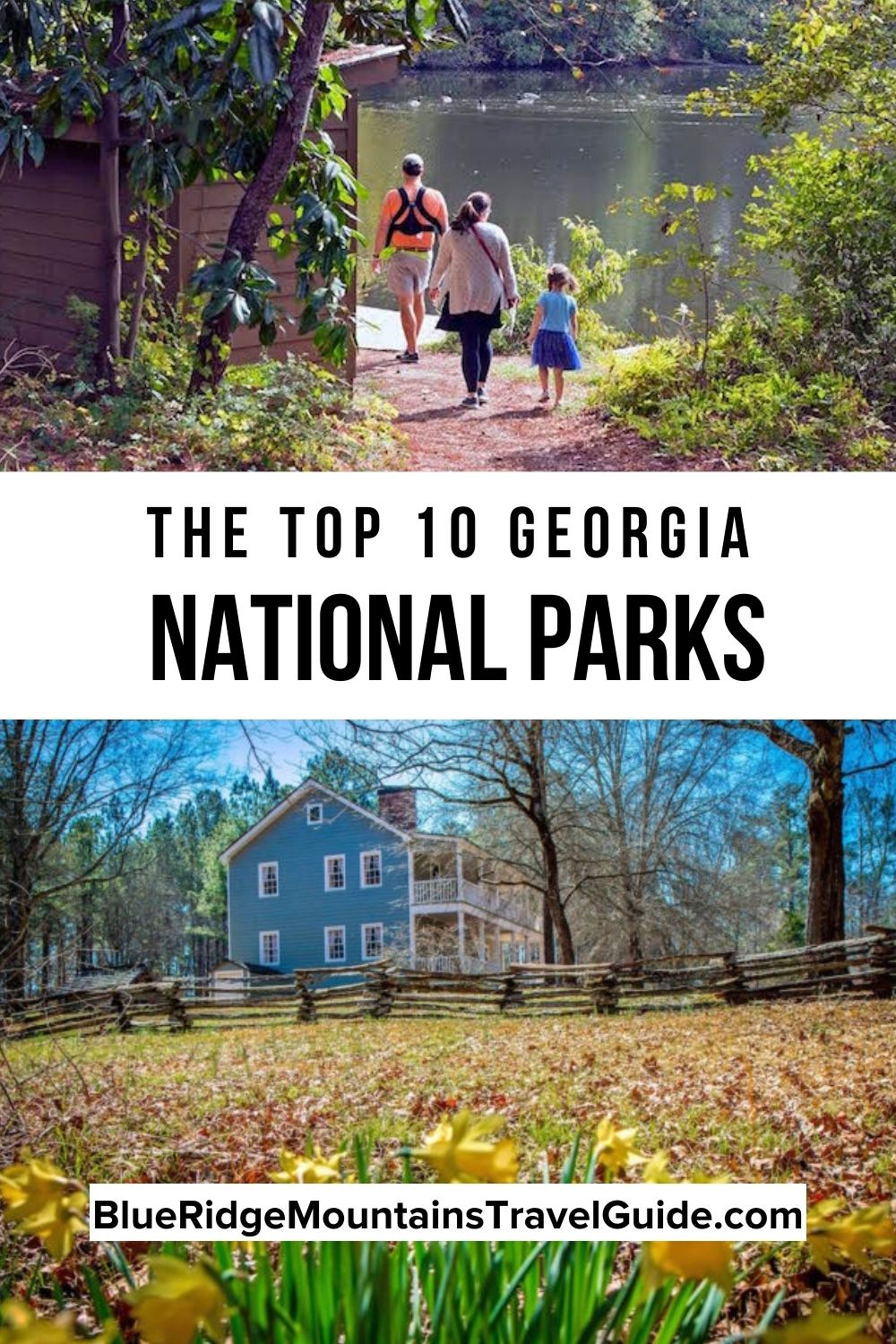When most people think of U.S. National Parks, they tend to think of epic attractions like the Grand Canyon, Great Smoky Mountains, Yellowstone, and Yosemite.
But in reality the National Park Service manages more than 423 individual units covering more than 85 million acres in all 50 states, the District of Columbia, and various US territories.
Surprisingly, the state of Georgia is home to more than a dozen different national park units, including National Historic Parks and Trails, National Monuments, National Recreation Areas, and more.
And while a few are in South Georgia and along the coast, most are located around Atlanta and in North Georgia.
Read on for our in-depth guide to the 10 best National Parks in Georgia to visit, from historical sites such as the Ocmulgee Indian Mounds and Chattanooga & Chickamauga National Military Park to natural attractions such as the Chattahoochee River National Recreation Area and the Appalachian National Scenic Trail.
READ MORE: The 25 Best Day Trips From Atlanta GA
Top 10 National Parks in Georgia Guide
- Appalachian National Scenic Trail
- Chattahoochee River National Recreation Area
- Chattanooga & Chickamauga National Military Park
- Cumberland Island National Seashore
- Fort Frederica National Monument
- Fort Pulaski National Monument
- Kennesaw National Military Park
- Martin Luther King, Jr. National Historical Park
- Ocmulgee Mounds National Historic Park
- Trail of Tears National Historic Trail

1. Appalachian National Scenic Trail
280 Amicalola Falls State Park Rd, Dawsonville GA | 304 535-6278
The Appalachian National Scenic Trail stretches 2,200 miles, from North Georgia to Mount Katahdin in Maine. The Appalachian Trail in Georgia includes picturesque peaks like Springer Mountain, Blood Mountain, and Tray Mountain.
Most hikers start their journey at Springer Mountain, which is the AT’s Southern terminus. But it’s also common to begin with a section hike of the 8.5-mile approach trail that starts at Amicalola Falls State Park.
Thru-hikers typically begin their journey in early March or April, so the trails and shelters are fairly crowded then.
For section hiking the AT in Georgia, I recommend early summer. After completing the Amicalola approach trail, I stayed in the Springer Mountain Shelter, and both the hiking trails and shelters were relatively empty then.
There are numerous entrance points that make the Appalachian Trail accessible for section hikers. The towns of Blairsville, Helen, and Hiawassee are all great places for AT day hiking, and you can often find shuttles to drive you to the trailhead, then hike back to your car.
One of the more challenging climbs on the AT in Georgia is the Blood Mountain Trail, which involves a strenuous 2.1-mile hike to the summit. At 4,458 feet, it’s one of the tallest mountains in the state.
One of my favorite things about the AT in Georgia is that it’s very forgiving. The iconic white blazes make the trail easy to follow, and hiking apps like AllTrails and Far Out (formerly Guthooks) make it easy to plan your route.
READ MORE: 15 Best Day Hikes on the Appalachian Trial in Georgia
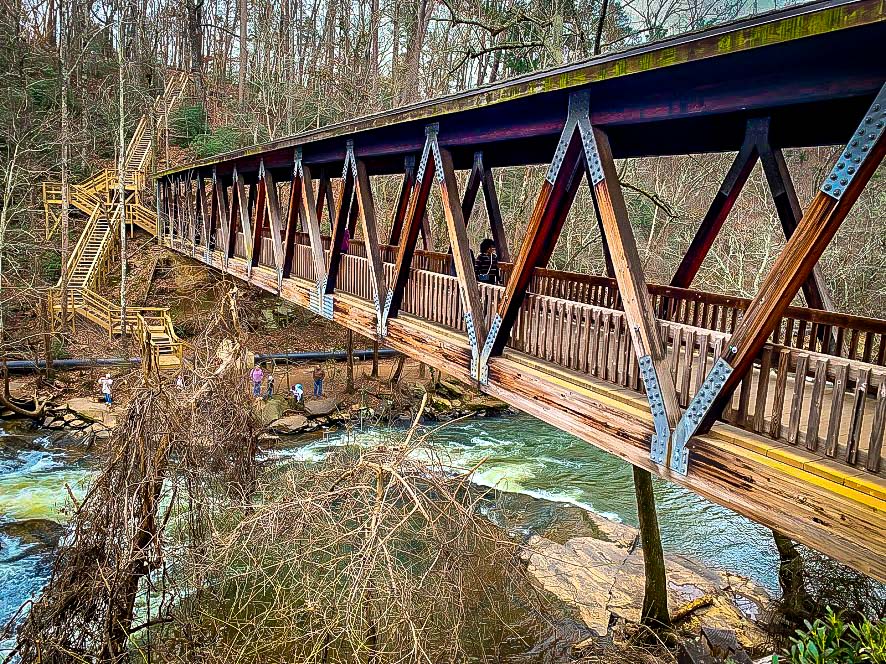
2. Chattahoochee River National Recreation Area
8800 Roberts Drive, Sandy Springs GA | 678-538-1200
One of the most popular national parks in Georgia, the Chattahoochee River National Recreation Area follows a 48-mile stretch of the river from Northwest Atlanta to Lake Lanier.
As the closest national park near Atlanta, the 10,550-acre recreation area offers opportunities for biking, birdwatching, boating, fishing, hiking, tubing, and more.
The Chattahoochee River is annually stocked with trout, bass, catfish, and 23 other species of fish, making it a popular destination for fisherman. Year-round fishing is available with a Georgia fishing license, and a trout stamp is required.
While the river rarely gets warmer than 50ºF, river tubing (with rentals available from local outfitters) is also popular here. Rafting, kayaking, canoeing, and boating are all allowed on the river, but jet skis are prohibited.
The main draw to this Georgia national park is the Chattahoochee River, but there are some beautiful hiking trails in the Cochran Shoals and Palisades units that are available to walkers and cyclists.
The park is home to over 240 species of Georgia birds, and the nearby Chattahoochee Nature Center helps to rescue and rehabilitate injured local wildlife.
The park’s Vickery Creek unit features one of the coolest covered bridges in Georgia, and is home to the Roswell Mill Ruins, which was one of the largest cotton mills prior to the Civil War.
READ MORE: The Best 15 Hiking Trails in the Chattahoochee National Forest
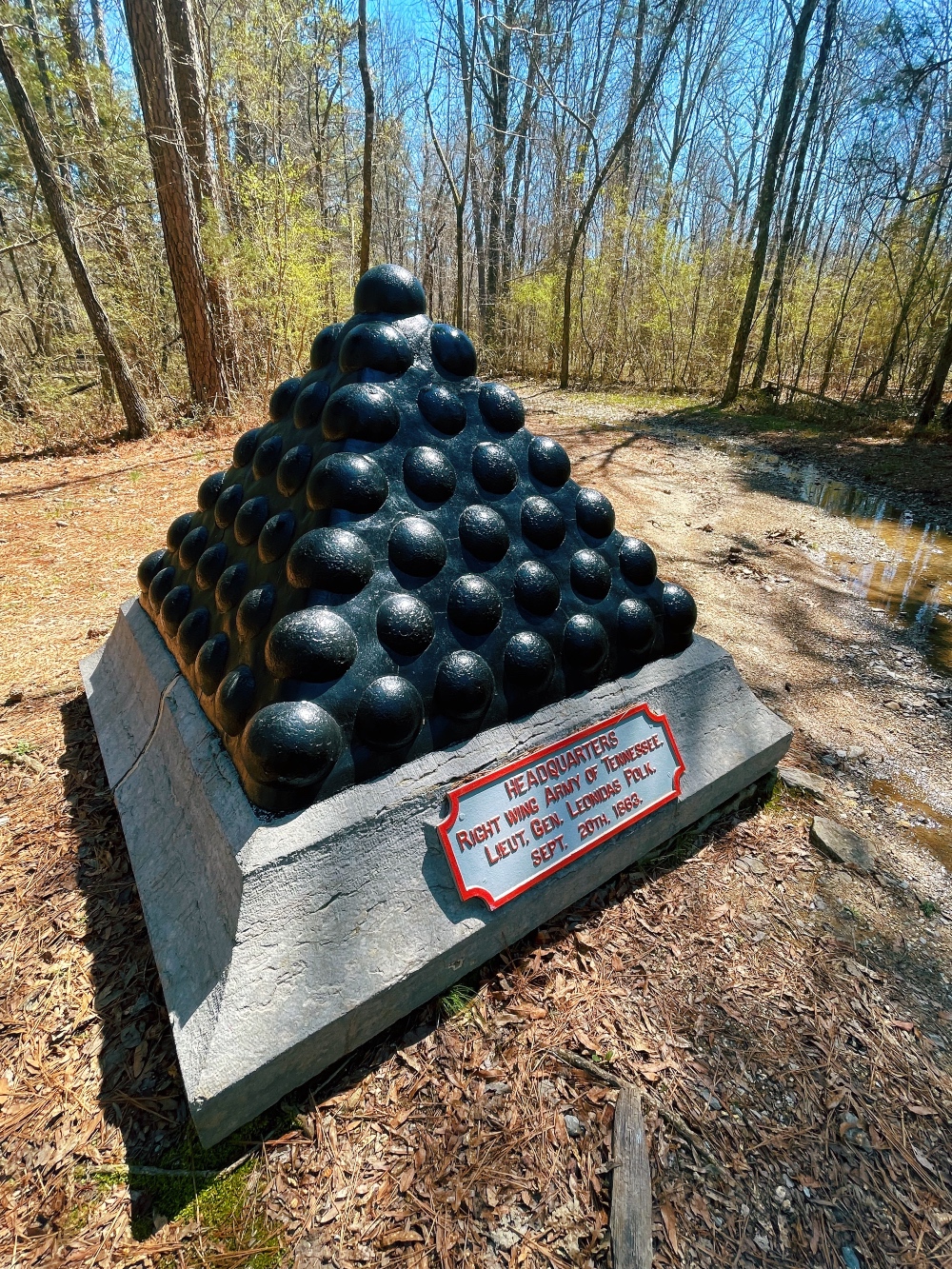
3. Chattanooga & Chickamauga National Military Park
3370 LaFayette Road, Fort Oglethorpe GA | 708-866-9241
One of my favorite national parks in North Georgia, the Chattanooga & Chickamauga National Military Park in split into four sections across Chattanooga TN and North Georgia.
The Chickamauga Battlefield, Missionary Ridge, Lookout Mountain Battlefield, and Moccasin Bend all offer walking trails and opportunities to learn about Georgia state history., with lots of historic monuments, signs, and landmarks.
I recently completed the 2.8-mile Colquitt Monument and Helm Monument loop in Fort Oglethorpe GA. The easy trail was a little muddy but well-marked, with signs that included QR codes to the trail map.
The Lookout Mountain Battlefield, which is just over the Tennessee-Georgia border, is home to some of the most popular hiking trails in Chattanooga, including Point Park, Sunset Rock, and Craven’s House Trail.
Note that Point Park, which is located above the Lookout Mountain Battlefield, has a $10 admission fee for visitors ages 16 and up. The park includes a paved walking path, stunning scenic overlooks, and the Ochs Memorial Observatory.
READ MORE: The 30 Best Hiking Trails in North Georgia Bucket List

4. Cumberland Island National Seashore
113 St. Marys St W, St. Marys GA | 912-882-4336
Located 1.5 hours from Savannah, the Cumberland Island National Seashore encompasses 9,800 acres of wilderness.
It’s only accessible via the Cumberland Island Ferry, which runs two times a day from March through September, and only 5 times a week in the winter. It costs $17 for adults, $16 for seniors, $15 for kids under 15, and it’s free for kids under 5.
There are no stores, cars, or cell service on Cumberland Island, making it the perfect place to get away for a day or weekend of outdoor recreation.
Swimming, birdwatching, photography, and beach combing are all popular activities on the island. You can also rent bicycles at the Sea Camp Dock for $16 a day (or $20 for overnight), but they cannot be reserved in advance.
Cumberland Island is home to the only unmanaged herd of feral horses on the east coast. It also has 50 miles of hiking and biking trails, with 5 different campgrounds that are available to reserve up to 6 months in advance.
Visitors are strongly advised to closely review the national park’s official website, as there are specific ferry return times and rules for campers with bikes.
READ MORE: The 10 Best Campgrounds in North Georgia

5. Fort Frederica National Monument
6515 Frederica Rd, St. Simons Island GA | 912-638-3639
Located on St. Simons Island, the Fort Frederica National Monument is home to a stone fort that was built in the 1740s to protect the southern British boundary from Spanish raids.
What remains of Fort Frederica today includes ruins of the homes, the fort’s powder magazine, part of the military barracks, and the graves in the town’s cemetery. It remains unknown who (and how many) resides in the cemetery.
The 2.5-mile Fort Frederica Loop Trail takes you past all the park’s major points of interest. The Visitors Center, Fort Frederica, and the cemetery are all located along the path.
The fort sits right along the Frederica River, which is primarily a salt marsh. Fishing, boating, and kayaking are all available on the river.
This Georgia national park is home to the iconic Spanish moss and sprawling oak trees for which Georgia’s coastal areas are known. Some of the local flora was destroyed by Tropical Storm Irma and Hurricane Matthew in 2019.
As a result, many downed trees were removed, and archeological efforts removed artifacts– including an intact wine bottle– from underneath the trees.
Fort Frederica is also located just 12 minutes from the Bloody Marsh Battle Site, where an outnumbered group of Spanish invaders were slaughtered by the British in 1742.
READ MORE: The 15 Best North Georgia State Parks & Historic Sites
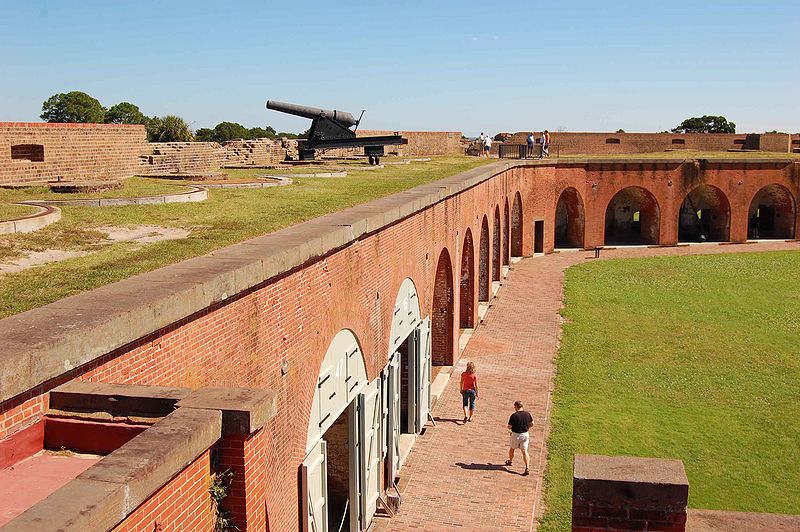
6. Fort Pulaski National Monument
101 Fort Pulaski Road, Savannah GA | 912-786-5787
The Fort Pulaski National Monument is the only national park near Savannah GA. It’s located on Cockspur Island, which is between Savannah and Tybee Island.
Constructed to protect the port of Savannah under the orders of James Madison after the War of 1812, Fort Pulaski is open for self-guided tours from 9AM-4:30PM daily. All public programs are currently suspended due to COVID.
The tour takes 45 minutes to an hour, and should include a stop at the island’s contraband camp on the north hiking trail. This is where many former enslaved Africans lived after being ferried over once the island freed its slaves in April 1862.
The Savannah national park also includes other hiking trails, such as the North Pier Trail, which passes through the remnants of Fort Pulaski’s original village.
The Lighthouse Overlook Trail is a 1.7-mile, out-and-back hike that offers beautiful views of the Savannah River and Tybee Island. While the lighthouse, Lighthouse Island, and North Shoreline are currently closed for preservation and resource protection, they’re still visible from the trail.
Before you go, be sure to visit the park’s website and watch the informational video on the 1862 Battle of Fort Pulaski, in which Union forces captured the Confederate-held fort after a 30-hour bombardment.
READ MORE: 15 Fun Activities Where You Can Experience Fall in Georgia
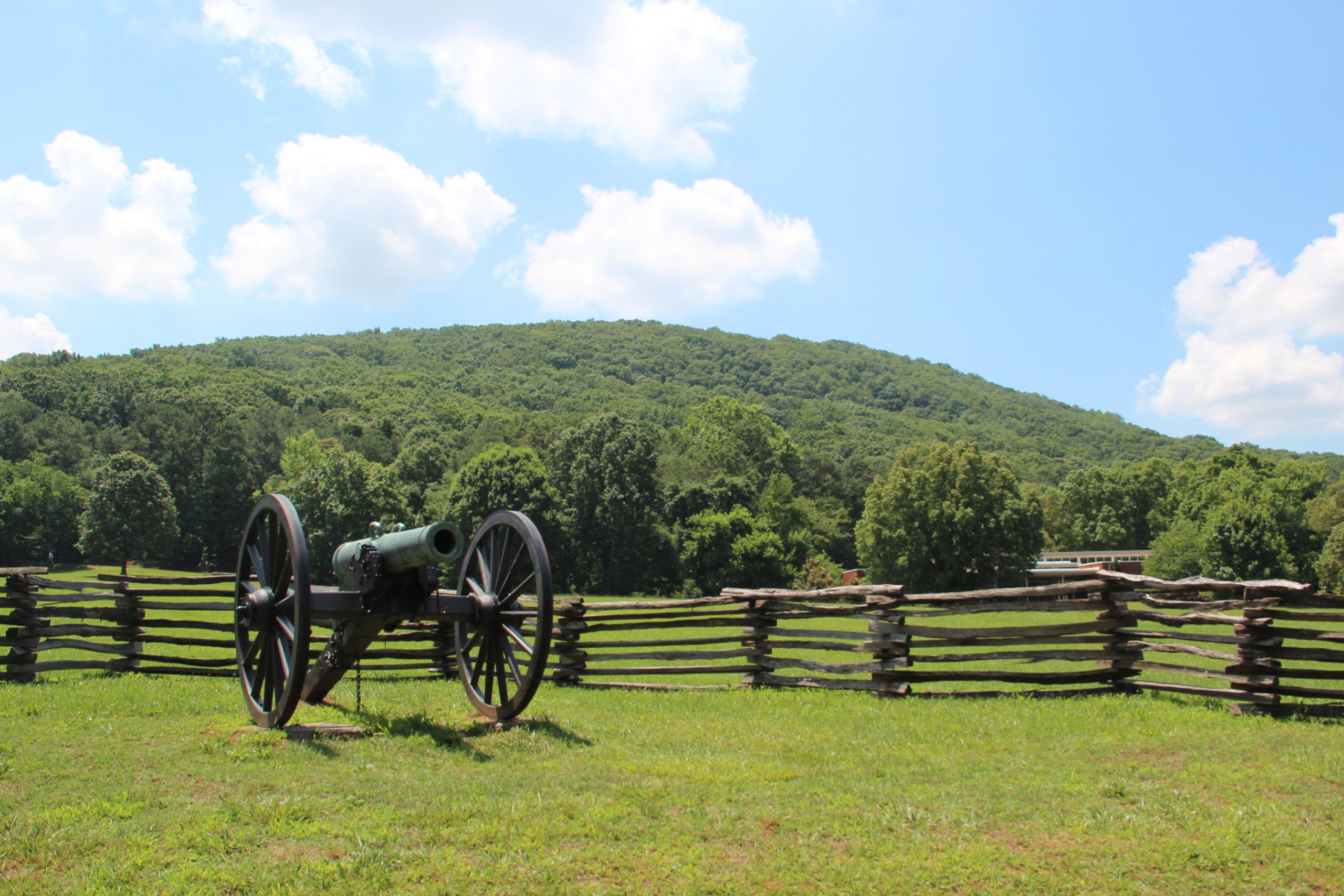
7. Kennesaw National Battlefield Park
900 Kennesaw Mountain Dr, Kennesaw GA | 770-427-4686
Located 23 miles north of Downtown Atlanta, the Kennesaw National Battlefield Park preserves a key battlefield of the Civil War‘s Atlanta campaign.
This park includes 22 miles of hiking trails. You can hike Kennesaw Mountain and Little Kennesaw Mountain on the 11-mile Battlefield Trail Loop, or simply summit the iconic North Georgia mountain on the 2.1-mile Kennesaw Mountain Trail.
Guided hikes and living history events are often offered at the park, with info available via the national park’s website.
While there are no horses available to ride in Kennesaw National Battlefield Park, horseback riding is allowed here. Horse trailers can park at the dirt lot on Cheatham Hill and Powder Springs Rd.
The park also features a renovated museum with authentic uniforms, weapons, and flags, and a shop that sells souvenirs, gifts, and books related to the Battle of Kennesaw.
Visitors should note that there is no relic hunting or metal detecting allowed at the park.
READ MORE: The Top 10 Treehouse Rentals in the Georgia Mountains

8. Martin Luther King Jr. National Historical Park
450 Auburn Ave NE, Atlanta GA | 404-331-5190 x5046
Possibly the most famous of the national parks in Atlanta GA, the Martin Luther King Jr. National Historical Park preserves the history of the Civil Rights leader’s life.
The grounds of the Atlanta national park include many famous buildings, including the birth home of Martin Luther King Jr. and the Historic Ebenezer Baptist Church.
Modified 30-minute tours of MLK’s home are available Mon-Sat from 10AM to 4PM, with groups limited to 10 visitors.
Ebenezer, where MLK preached, is now run by Reverend Doctor Raphael Warnock. It has been renovated many times, most recently in 2001, and holds virtual services every Sunday at 9AM and 11AM.
In 1990, Coretta Scott King unveiled the Behold Monument in honor of her late husband just outside the visitor’s center. The International World Peace Rose Garden, a visual representation of MLK’s philosophy of non-violent change, is also open, offering 185 rosebushes in a variety of different colors.
The graves of Dr. and Mrs. King can be seen from the King Center’s Peace Plaza when you’re facing the garden.
READ MORE: The 10 Best State Parks With Cabins In Georgia
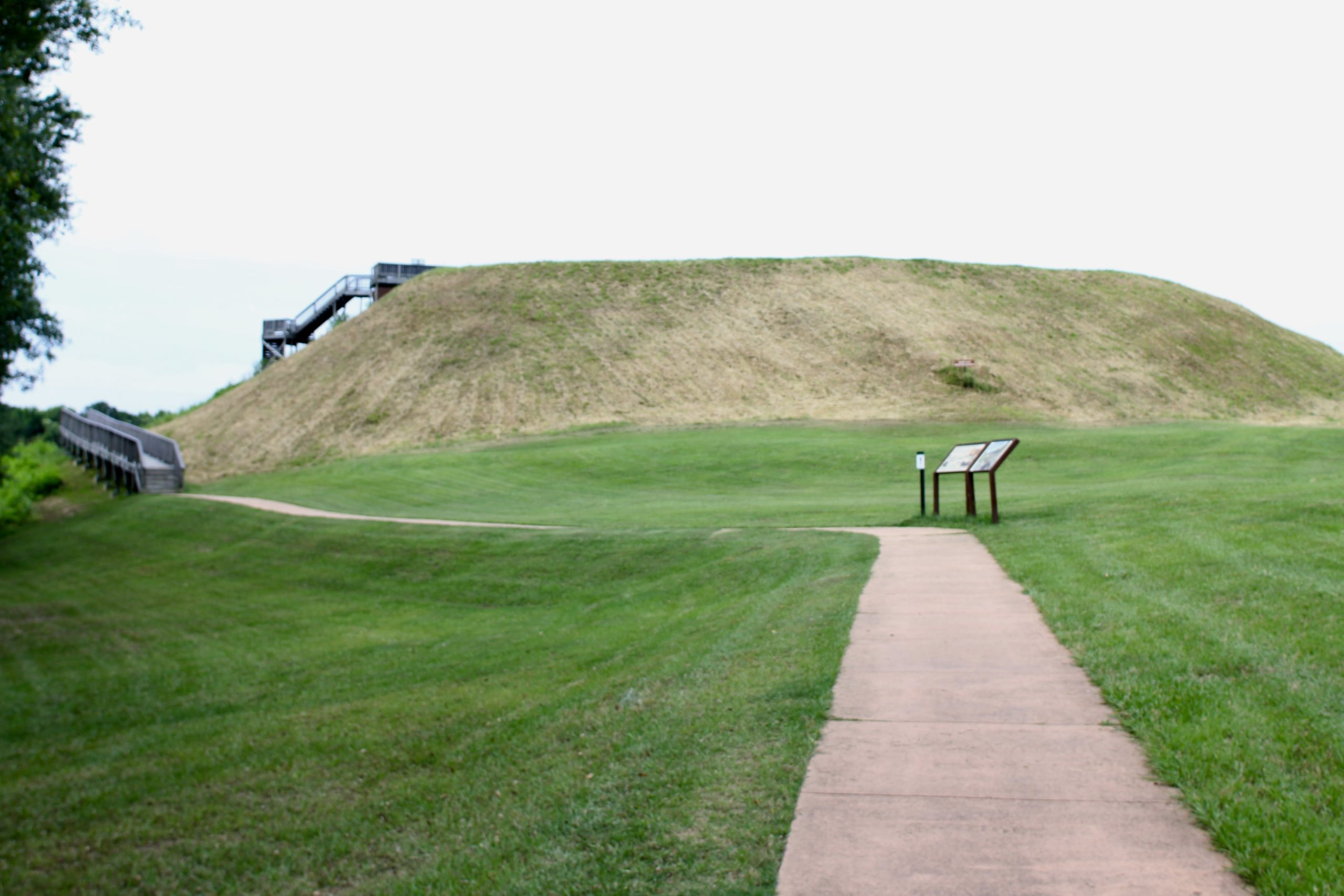
9. Ocmulgee Mounds National Historic Park
1207 Emery Hwy, Macon GA | 478-752-8257 x222
Located near Macon GA, the Ocmulgee Mounds National Historic Park gives visitors an excellent opportunity to learn about the pre-colonial history of Georgia.
Constructed around 900 CE, the Ocmulgee Mounds are an ancient Native American site that has been occupied by many prehistoric cultures, including the Muscogee Creek tribe.
The massive mounds were likely created as an elevated base for temples and houses for important people in the tribe. You can see them on the 1.8-mile National Monument River Trail, which takes you past all seven mounds.
The Great Temple Mound rises up 55 feet above the ground, but many of the mounds aren’t as obvious unless you know what to look for.
The 5.5-mile Ocmulgee National Monument Loop Trail is another great option, including all of the mounds as well as the Earth Lodge, which has been carbon-dated back to the year 1015.
A reconstructed council chamber of the Mississippian culture, the lodge is set into the side of a small hill. The walls and ceiling were reconstructed in the late 1930s, but the original clay floor was built by the Mississippian people.
The national park will be hosting the 30th Annual Ocmulgee Indian Celebration on September 17-18, 2022.
READ MORE: Exploring Etowah Indian Mounds Historic Site & Trails in Cartersville GA
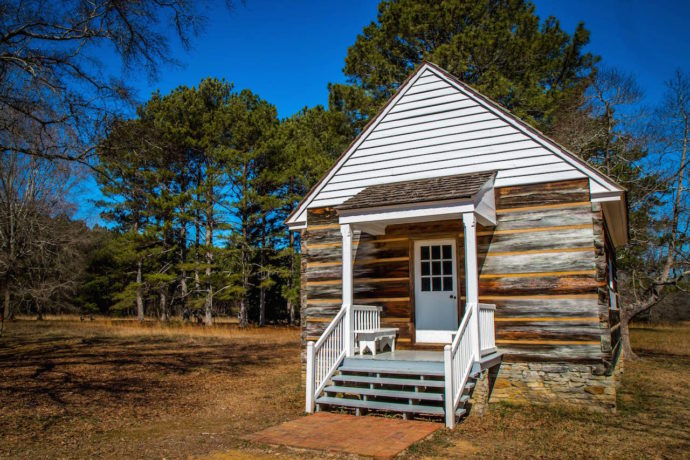
10. Trail of Tears National Historic Trail
1211 GA-225, Calhoun GA | 706-624-1321
The 800-mile Trail of Tears National Historic Trail commemorates the survival of the Cherokee people, who were forcefully removed from their homes in 1838-1839 after the signing of the Treaty of New Echota.
The Trail of Tears National Historic Trail in Georgia passes through many different small towns, including Rome, Dalton, Canton, Calhoun, Fort Oglethorpe, Chatsworth, Cedartown, and Summerville.
The New Echota State Historic Site in Calhoun was the Cherokee capital established by the tribe’s legislature. It includes 12 original and reconstructed buildings, including the Council House, Court House, Print Shop, and houses.
Visitors can also view interpretive exhibits or hike nature trails leading to New Town Creek and a small beaver pond.
Another popular place to learn about the Trail of Tears is the Chief John Ross House, which is located right on the northern border in Rossville GA.
The town was named for John Ross, a Scots-Irish immigrant who married a Cherokee woman. He served as a longstanding leader to the Cherokee Nation, opposing the seizure of Cherokee property known as the Georgia Land Lotteries.
The house sits behind a chain-link fence off of Highway 27, and is only a 5-minute drive from the Chattanooga and Chickamauga National Military Park. –by Amy Lewis; lead image of Hogpen Gap in Helen GA by Bret Love & Mary Gabbett

